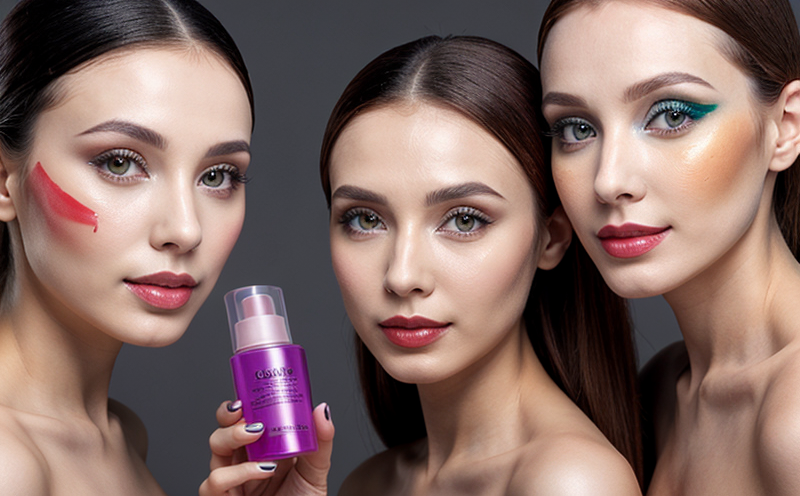Acute Oral Toxicity Testing for Cosmetic Ingredients
In the realm of cosmetics testing, ensuring the safety and efficacy of cosmetic products is paramount. Acute oral toxicity testing plays a crucial role in this process by assessing the potential harmful effects of cosmetic ingredients when ingested or consumed orally. This test is particularly important for identifying any toxic substances that could pose risks to consumers.
During acute oral toxicity testing, a standardized dose of the cosmetic ingredient under investigation is administered to laboratory animals. The chosen species and parameters are typically guided by regulatory standards such as OECD 401 or similar international guidelines. These tests help in understanding the lethal dose (LD50), which indicates the amount of substance that could kill 50% of a test population when ingested.
Preparation of specimens for testing involves ensuring that all ingredients are accurately identified and quantified, as even trace amounts can influence outcomes. This meticulous process ensures that the results are reliable and representative. The use of advanced analytical techniques such as High-Performance Liquid Chromatography (HPLC) or Mass Spectrometry aids in precise identification and quantification.
The testing environment must be controlled to ensure consistent conditions across trials, which can significantly impact the validity of the results. Compliance with ISO 10993 standards ensures that tests are conducted under stringent quality control measures. This includes adherence to specific protocols for specimen preparation, dosing procedures, and observation periods.
The significance of acute oral toxicity testing extends beyond regulatory compliance; it also contributes to enhancing consumer confidence in cosmetic products. By identifying potential hazards early in the product development cycle, manufacturers can make informed decisions about ingredient selection and formulation adjustments, thereby reducing risks associated with unintended adverse effects.
Understanding the critical role this test plays in safeguarding public health is essential for stakeholders involved in cosmetic manufacturing and regulatory bodies. The insights gained from these tests inform ongoing research and development efforts aimed at creating safer and more effective cosmetics.
In summary, acute oral toxicity testing is a vital component of ensuring that cosmetic ingredients meet stringent safety standards before they reach the market. This process not only adheres to international regulations but also supports the broader goal of promoting health and well-being through safe consumer products.
Why It Matters
The results from acute oral toxicity testing are crucial for several reasons:
- Regulatory Compliance: Ensuring that cosmetic ingredients meet the safety standards set by regulatory bodies such as the FDA, EU Cosmetics Regulation, and other national authorities.
- Risk Assessment: Identifying potential hazards associated with the use of specific ingredients in cosmetics.
- Consumer Safety: Protecting consumers from exposure to harmful substances that could lead to severe health issues.
- Informed Decision-Making: Providing data that helps manufacturers make evidence-based decisions about ingredient selection and formulation adjustments.
The importance of this testing cannot be overstated, as it directly impacts public health and the integrity of the cosmetics industry. By conducting thorough toxicology assessments, we can ensure that cosmetic products are both safe and effective for consumers.
Customer Impact and Satisfaction
The implementation of rigorous acute oral toxicity testing has a direct impact on customer satisfaction by ensuring the safety and quality of cosmetics. This approach not only meets regulatory requirements but also builds trust with customers who value transparency in product manufacturing.
For quality managers, compliance officers, R&D engineers, and procurement teams, this service offers valuable insights into ingredient safety, allowing for more informed decision-making processes. By leveraging the results of these tests, companies can develop safer formulations that align with global standards, thereby enhancing brand reputation and customer loyalty.
Moreover, the transparency and reliability provided by such testing contribute to a positive perception among consumers regarding the commitment of manufacturers to product safety. This fosters a culture of trust, which is essential for long-term business success in the cosmetics industry.
International Acceptance and Recognition
The global nature of the cosmetics market necessitates consistent standards across different regions. Acute oral toxicity testing is widely recognized and accepted internationally, adhering to guidelines set by organizations such as OECD (Organisation for Economic Co-operation and Development) and ISO (International Organization for Standardization).
Many countries have adopted these international standards into their national regulations, ensuring that the tests conducted are consistent with global best practices. This harmonization of testing protocols facilitates easier market access and compliance across borders.
The acceptance of these tests by regulatory authorities worldwide underscores their importance in establishing a robust framework for cosmetic safety. By aligning with international standards, manufacturers can ensure that their products meet the highest safety standards, thereby gaining credibility and trust from consumers and regulators alike.





